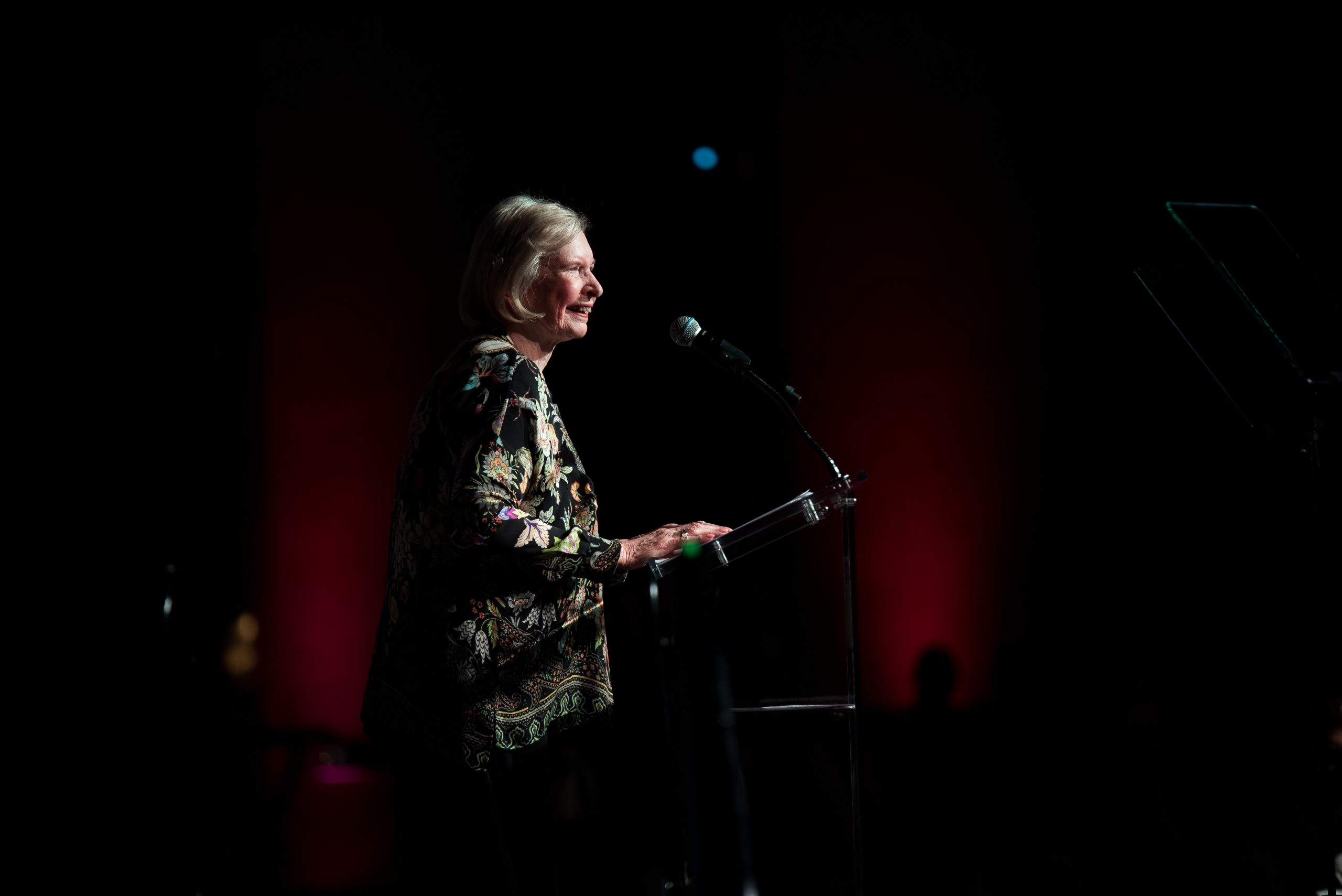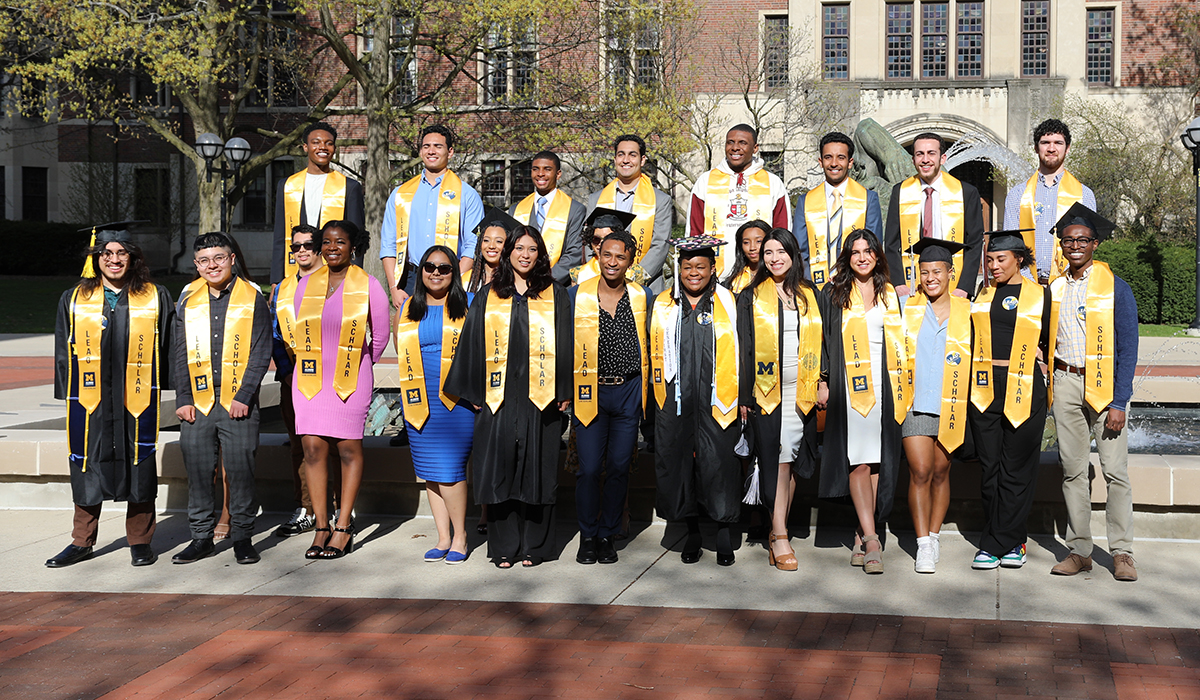More than 500,000 spectators watched as the race cars rolled to the starting line of the 1977 Indianapolis 500. Janet Guthrie, ’60, gripped her steering wheel, waiting for the loudspeakers to belt the traditional starting command. For the first time since the inaugural race in 1911, the announcer gave a new starting call:
“In company with the first lady ever to qualify at Indianapolis,” declared Tony Hulman, then the owner of the Indianapolis Motor Speedway, “Gentlemen, start your engines!”
Forty-two years later, on July 18, 2019, it was Guthrie’s turn to kick off an event. This time, the microphone was in her hands as the crowd awaited her words. Standing before a ballroom full of auto executives, Guthrie thanked the Automotive Hall of Fame, founded in 1939, for making her the fifth-ever female inductee. As she spoke, a slideshow behind the stage unveiled her freshly engraved signature in the Hall of Honor in Dearborn, Michigan, alongside those of mostly male inductees, including auto executives Henry Ford and Sergio Marchionne and racers Mario Andretti and Dale Earnhardt.
Recalling her efforts to become the first woman to qualify for the 1977 Indianapolis 500, Guthrie described to the crowd what the racing culture was like when her team announced plans to try to qualify.
“Up until four years earlier, women weren’t allowed in the pits, garage area, or the press box for any reason whatsoever.
A woman driver on the race track was unthinkable.” In the run-up to the race, the son of a former winner even told a reporter, “After 40 laps, Guthrie won’t be able to steer a car.” Women, he claimed, were simply too weak.
Guthrie did not finish that first race, but not due to strength issues. Engine trouble sidelined her from finishing the course. Undeterred, she returned the following year with a new car and fractured wrist and recorded a ninth-place finish that remained the best-ever by a female driver for 27 years. Guthrie even changed lanes and became the first woman to qualify for NASCAR’s Daytona 500, where she was named Top Rookie.
Her success in spite of opposition made Guthrie an icon for women athletes, particularly race car drivers, but it also put to shame another driver who had told her women would never be good at the sport because they lacked a certain male body part. As Guthrie—wearing a gold necklace, floral blouse, and grin—said to the inductee audience before her, “I never did understand the utility of that apparatus in driving a race car.”
Following her historic placement in the 1978 race, Guthrie became a household name. She appeared in the late ’70s on television programs, including “Good Morning America,” “Hollywood Squares,” and “Superstars,” and made it into the 1979 Supersisters trading cards, which featured famous women. A set of cards bearing her image still lives on at the Museum of Modern Art, while the helmet and driver’s suit she wore is in the Smithsonian Institute and the car she drove is in the Indianapolis Motorsports Museum.
At the time, Guthrie decided to use her fame to highlight the struggle women faced in sports—including visiting the White House to support Title IX reforms for women athletes. Simultaneously, she was learning just how impenetrable professional race car driving was for a woman. Male sponsors were simply not interested in covering the many costs associated with the sport for female competitors. The issue, she claims, still exists to this day.
“I drove race cars because I could not do otherwise, because it was an obsession and a passion. If I contributed some small bit to the changing perception of women’s abilities, I am glad of that.” But, she writes in her 2005 memoir, “Janet Guthrie: A Life at Full Throttle,” “it was not the reason I did what I did.”
Guthrie’s final attempt at the Indianapolis 500 was in 1979. In 1983, unable to secure a long-term sponsor, Guthrie acknowledged—with “unspeakable regret,” as she writes in her memoir—“my chance at winning top-level races had been cut short.” No women qualified for the Indianapolis 500 again until the 1990s, and since Guthrie, only eight women have officially started.
Guthrie’s relentless interest in motion, despite crude jeers by spectators, traces back to her days at U-M. Always fascinated by mechanical speed, adventure, and risk, Guthrie was one of a small number of female aeronautical engineering students on campus.
“It seemed the most promising way to make a living in a field I loved,” she explains in her memoir. “Flying was not an option; the airlines didn’t hire women, the military didn’t let women fly, and other venues paid little or nothing.” A year later, bored by the engineering curriculum, she switched to physics, which, she writes, offered her “adventures of the mind.”
Following her sophomore year, Guthrie took a year off from U-M to earn a commercial pilot’s license and her flight-instructor rating. When she finally graduated from U-M, she took a job as an engineer for Republic Aviation on Long Island, New York, before shifting her focus to auto racing. Her racing career began in 1963 on the Sport Car Club of America SCCA circuit in a Jaguar XK140. In 1964, she built her first auto engine. That same year, she briefly set her sights on space exploration when she was one of only four women who passed the first round of eliminations for the NASA Scientist-Astronaut Program.
NASA ultimately rejected her and the other female applicants, but Guthrie had already moved on from aeronautics to automobiles. By 1972, she was racing full time.

“I only ever drove 11 IndyCar races, so I can’t assert with any certainty that I would have won IndyCar races, although, obviously, I think I would have,” she says. “But I know for certain that, had I been able to continue in NASCAR, I would have won races in less than the five years, which was the average at the time.”
Before she had even left the sport, Guthrie received her first accolade. In 1980, she was inducted into the inaugural class of the International Women’s Sports Hall of Fame. In 2006, she would become an International Motorsports Hall of Fame inductee and, in 2018, an inductee into the Sports Car Club of America Hall of Fame.
Guthrie retired in the 1980s to ski in the mountains of Colorado, reflect upon her life, and write her memoir. In her speech in July, she said she felt that writing her memoir was the best way to honor the sport and inspire women in racing, despite her own setbacks.
“I wanted to put the reader inside a driver’s mind, and I wanted to convey the passion and complexity to people who might know little or nothing about it.”
In 2019, ESPN premiered “Qualified,” an “ESPN 30 for 30” documentary about Guthrie. Jenna Ricker, the director, felt particularly drawn to telling Guthrie’s story. “Once the helmet is on and you’re in the car, you can’t tell the gender of anybody. I think that’s one of the things that’s most frustrating about Janet’s story is that it’s just a career cut short, for as far as anybody can point to, no other reason than her gender. And that is a really tough pill to swallow.”
She also related to Guthrie because filmmaking is another volatile vocation for women.
“I thought, well, if I’m relating to her and I have never raced a car in my life, I imagine a lot of women and people can relate to somebody so focused and dedicated to what they want to do, what they feel they’re born to do,” Ricker said.
For the second-ever female Automotive Hall of Fame president, Sarah Cook, it was an honor to induct Guthrie and immortalize her story for future generations.
“There is that idea of, if a man finished ninth, it wouldn’t be worth lauding or celebrating. But if she was a man, she probably wouldn’t have had those roadblocks put in front of her that made finishing ninth an actual feat,” Cook said. “We keep telling stories like Janet Guthrie’s so that we keep moving that dial and we keep evolving the story, until one day when it’s hopefully not a novel story.”
Steve Zoski, ’13, has written for Wayne State magazine, The Michigan Daily, USA Today, and various nonprofit organizations.





